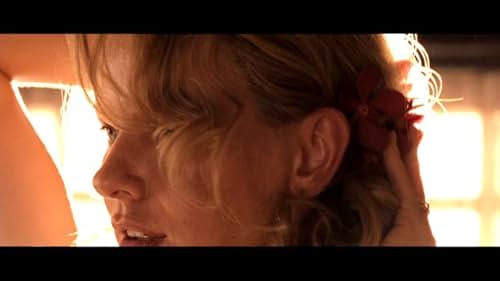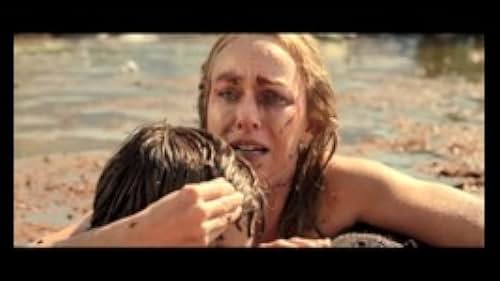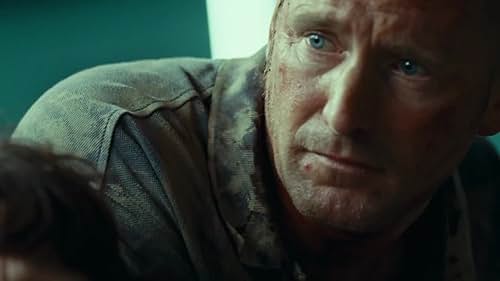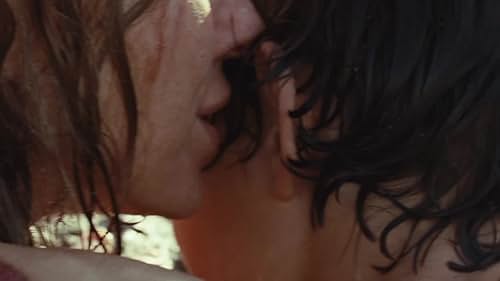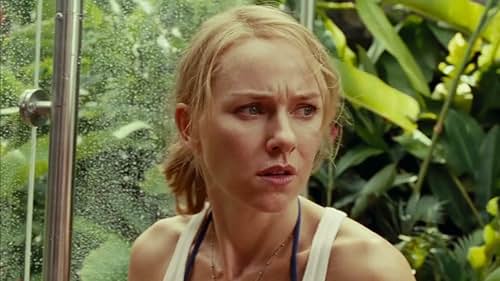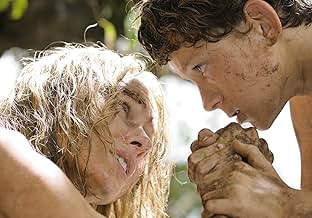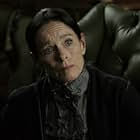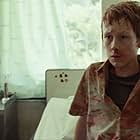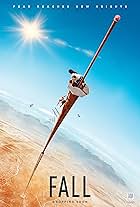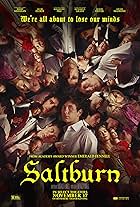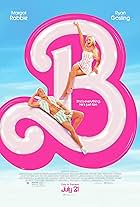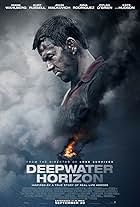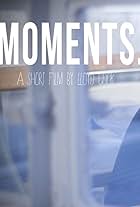The story of a tourist family in Thailand caught in the destruction and chaotic aftermath of the 2004 Indian Ocean tsunami.The story of a tourist family in Thailand caught in the destruction and chaotic aftermath of the 2004 Indian Ocean tsunami.The story of a tourist family in Thailand caught in the destruction and chaotic aftermath of the 2004 Indian Ocean tsunami.
- Nominated for 1 Oscar
- 28 wins & 70 nominations total
- Director
- Writers
- All cast & crew
- Production, box office & more at IMDbPro
Storyline
Did you know
- TriviaThe scene where the tsunami hits the resort could only be filmed once. It would have cost too much money to rebuild the set.
- GoofsWhen Daniel meets with his father, he says in Swedish - "vad tung du är Johan (how heavy you are, Johan)" instead of the character's name Daniel. This is because the real name of the character Daniel, is Johan, and it's his real father Jan.
- Quotes
[first lines]
Title Card: On December 26th, 2004, the deadliest tsunami on record hit the South East Coast of Asia. The lives of countless families all over the world changed forever. This is the true story of one of those families.
- Crazy creditsThe title and the rest of the credits do not appear until the end of the film. The only credits that appear at the beginning are the production companies' logos and an explanation of how the Tsunami came about.
- Alternate versionsThere are two versions, the general theatrical release, and a slightly edited cut released in China. The different runtimes are, respectively, "1h 54m (114 min)" and "1h 53m (113 min) (China)".
- ConnectionsFeatured in The Tonight Show with Jay Leno: Episode #21.55 (2012)
- SoundtracksIylm
Composed and Performed by For Fiesta
Voice by Lluís Segura (as Lluís Segura)
Guitar by Marc Prades
Solo Guitar by Marc Gómez del Moral
Bass by David Gallart
Drums by Bernat Vilaplana
Featured review
THE IMPOSSIBLE (2012)
The 2004 tsunami was one of the deadliest natural disasters on record. Because it occurred in the Christmas season and hit many resort area beaches its death toll of almost 250,000 was indiscriminate, taking not only South Asians but many visiting vacationers. People everywhere were affected by it. My own relatives who were then living in Thailand were destined that day to be on the beach, but, unknown to the rest of us, illness caused them to alter their plans. I personally heard from Thai acquaintances the story of nieces and nephews who excitedly ran to the shore to see the wondrous phenomenon of the receding ocean, only to be swamped by its return. Weeks later, flying over the Indonesian coastline, I could see with my own eyes just how far inland the wave had rushed, and the devastation it had wrought.
How do you frame such a catastrophe in human terms, and present a situation of pure chaos in a way that makes a compelling story? How do you tell such a tale in a way that respects both the lost and the survivors, many of whom suffered personal tragedies as well, and more of whom bore the guilt of survival? How does one story tell some of the many stories of that day? These were among the challenges that faced director Juan Antonio Bayona and screenwriter Sergio G. Sanchez when they decided to put an account of the 2004 tsunami on the screen. Their solution was to deal with one British family on vacation in Thailand from Japan, but their film uses that family as a catalyst to show the tsunami's awful effect not only on the tourist population but on the local people who suffered even more.
Both the film itself and the filmmakers have taken pains to say that this is a "true story," and they have aimed for the greatest possible authenticity in the circumstances. They have based themselves on detailed interviews with the family members and with other survivors, some of whom actually appear in the film. (For example, those who tell their tales to Ewan McGregor at the bus station are almost all actual survivors.) While footage of the tsunami strike itself was shot in a water tank at Alicante on the Spanish coast, and a couple of days filming of interiors took place in Spanish studios, the remainder of this picture was shot on location in Thailand using the real places of the story, such as the Orchid Beach Hotel in Phang Nga, and the actual hospital where much of the action occurs.
The actual Thai locations and the many Thai actors keep the production values superb, and give this film an authenticity it would not otherwise have. So of course do the survivors who take part, whose emotions are sometimes all too real. Many video shots exist of the tsunami hitting the Asian beaches, but no one who was not there can have any real idea of what it must have been like to have been caught up by its waters. Bayona has chosen to focus not so much on the massive power of the tidal wave itself but on the sheer terror and disorientation it must have created for those submerged in it, and upon the human toll it took. But his scenes of its striking are horrific enough to give some sense of its magnitude, even on the screen. Nor does he pull his punches in some of the grisly scenes that follow. The impressive results that display both the striking wave and its terrible aftermath owe much to production designer Eugenio Caballero.
The big names here are Ewan MacGregor as Henry and Naomi Watts as Maria, his doctor wife, while Geraldine Chaplin has a cameo role as a lady who comforts one of their sons on a starlit night. MacGregor and Watts seem to suit their parts, but in a sense they are playing predictable roles. They become a couple literally torn apart, a father having to search among the debris for the remainder of his family and a mother who for much of the picture hovers close to death. The family's three sons are played by Tom Holland (Lucas), Samuel Joslin (Thomas) and Oaklee Pendergast (Simon). The two younger boys are cute as well as being effective, but that is not really a word that suits Tom Holland. The young British actor displays a surprising maturity and delivers a wonderfully measured performance, reminiscent of a younger Daniel Radcliffe. Despite the bigger names involved, it is his portrayal of Lucas that carries the picture since he is the hub around whom events revolve as the individual stories unfold. That is a lot to ask of a young actor, but Holland delivers.
No one story can ever do justice to the events of that day and the days that followed. Nor can a story set in just one location ever capture just how wide-ranging were the tsunami's effects. How can you tell the story of what happened almost simultaneously in Indonesia and India, Myanmar and Malaysia, and eventually affected even the African coast. Thankfully, Bayona doesn't try. He focuses on the few, hoping that through them audiences will better understand the tale of the many. For such a story, The Impossible is perhaps a more than fitting title, but the film works and gives a view that is both visually impressive and dramatically moving.
The Impossible premiered at the Toronto International Film Festival on September 9, 2012. It will open in Spain on October 11, and go into general release in North America in the last week of December.
Ray Lahey
The 2004 tsunami was one of the deadliest natural disasters on record. Because it occurred in the Christmas season and hit many resort area beaches its death toll of almost 250,000 was indiscriminate, taking not only South Asians but many visiting vacationers. People everywhere were affected by it. My own relatives who were then living in Thailand were destined that day to be on the beach, but, unknown to the rest of us, illness caused them to alter their plans. I personally heard from Thai acquaintances the story of nieces and nephews who excitedly ran to the shore to see the wondrous phenomenon of the receding ocean, only to be swamped by its return. Weeks later, flying over the Indonesian coastline, I could see with my own eyes just how far inland the wave had rushed, and the devastation it had wrought.
How do you frame such a catastrophe in human terms, and present a situation of pure chaos in a way that makes a compelling story? How do you tell such a tale in a way that respects both the lost and the survivors, many of whom suffered personal tragedies as well, and more of whom bore the guilt of survival? How does one story tell some of the many stories of that day? These were among the challenges that faced director Juan Antonio Bayona and screenwriter Sergio G. Sanchez when they decided to put an account of the 2004 tsunami on the screen. Their solution was to deal with one British family on vacation in Thailand from Japan, but their film uses that family as a catalyst to show the tsunami's awful effect not only on the tourist population but on the local people who suffered even more.
Both the film itself and the filmmakers have taken pains to say that this is a "true story," and they have aimed for the greatest possible authenticity in the circumstances. They have based themselves on detailed interviews with the family members and with other survivors, some of whom actually appear in the film. (For example, those who tell their tales to Ewan McGregor at the bus station are almost all actual survivors.) While footage of the tsunami strike itself was shot in a water tank at Alicante on the Spanish coast, and a couple of days filming of interiors took place in Spanish studios, the remainder of this picture was shot on location in Thailand using the real places of the story, such as the Orchid Beach Hotel in Phang Nga, and the actual hospital where much of the action occurs.
The actual Thai locations and the many Thai actors keep the production values superb, and give this film an authenticity it would not otherwise have. So of course do the survivors who take part, whose emotions are sometimes all too real. Many video shots exist of the tsunami hitting the Asian beaches, but no one who was not there can have any real idea of what it must have been like to have been caught up by its waters. Bayona has chosen to focus not so much on the massive power of the tidal wave itself but on the sheer terror and disorientation it must have created for those submerged in it, and upon the human toll it took. But his scenes of its striking are horrific enough to give some sense of its magnitude, even on the screen. Nor does he pull his punches in some of the grisly scenes that follow. The impressive results that display both the striking wave and its terrible aftermath owe much to production designer Eugenio Caballero.
The big names here are Ewan MacGregor as Henry and Naomi Watts as Maria, his doctor wife, while Geraldine Chaplin has a cameo role as a lady who comforts one of their sons on a starlit night. MacGregor and Watts seem to suit their parts, but in a sense they are playing predictable roles. They become a couple literally torn apart, a father having to search among the debris for the remainder of his family and a mother who for much of the picture hovers close to death. The family's three sons are played by Tom Holland (Lucas), Samuel Joslin (Thomas) and Oaklee Pendergast (Simon). The two younger boys are cute as well as being effective, but that is not really a word that suits Tom Holland. The young British actor displays a surprising maturity and delivers a wonderfully measured performance, reminiscent of a younger Daniel Radcliffe. Despite the bigger names involved, it is his portrayal of Lucas that carries the picture since he is the hub around whom events revolve as the individual stories unfold. That is a lot to ask of a young actor, but Holland delivers.
No one story can ever do justice to the events of that day and the days that followed. Nor can a story set in just one location ever capture just how wide-ranging were the tsunami's effects. How can you tell the story of what happened almost simultaneously in Indonesia and India, Myanmar and Malaysia, and eventually affected even the African coast. Thankfully, Bayona doesn't try. He focuses on the few, hoping that through them audiences will better understand the tale of the many. For such a story, The Impossible is perhaps a more than fitting title, but the film works and gives a view that is both visually impressive and dramatically moving.
The Impossible premiered at the Toronto International Film Festival on September 9, 2012. It will open in Spain on October 11, and go into general release in North America in the last week of December.
Ray Lahey
Details
- Release date
- Countries of origin
- Official sites
- Languages
- Also known as
- Lo imposible
- Filming locations
- Production companies
- See more company credits at IMDbPro
Box office
- Budget
- $45,000,000 (estimated)
- Gross US & Canada
- $19,019,882
- Opening weekend US & Canada
- $143,818
- Dec 23, 2012
- Gross worldwide
- $198,087,212
- Runtime1 hour 54 minutes
- Color
- Sound mix
- Aspect ratio
- 2.39 : 1
Contribute to this page
Suggest an edit or add missing content

